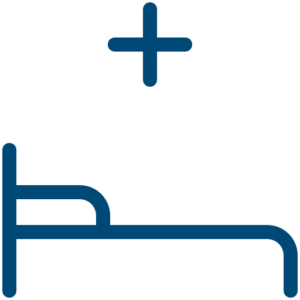Audit Common DRGs Faster with CAVO
Acute Encephalopathy
Causes & Symptoms
Acute encephalopathy is defined as a brain disease or malfunction that is a secondary complication to another condition often caused by stroke, infection, and tumor. Symptoms may include seizures, twitching, memory loss, and personality change.
Diagnosis
- Blood tests
- Spinal tap
- Imaging studies
- Electroencephalograms (EEG)
- Brain imaging or biopsy
Reimbursement
Acute toxic encephalopathy is a secondary diagnosis and billed as a MCC to the DRG billed. The broad nature of an encephalopathy diagnosis makes it challenging for healthcare professionals to accurately record the severity level. A good example is that a secondary diagnosis of unspecified encephalopathy is no longer MCC, but toxic encephalopathy is. If healthcare providers and/or clinical staff code unspecified encephalopathy, the coder must have queried the physician for confirmation of the correct ICD-10 code used and treatment of the same code; otherwise, the DRG is downgraded.
Use CAVO Search for Faster Acute Encephalopathy DRG Audit
Search DRG:
Surface the document—likely the attestation sheet or claim—reflecting the billed DRG and sequencing of diagnosis.
Principal Diagnosis:
To confirm the DRG billed is accurate, treated, and documented by the physician, begin searching the principal diagnosis of acute encephalopathy and then move to the secondary diagnosis. Determine if the encephalopathy is metabolic or toxic to confirm appropriate diagnosis sequencing. In CAVO, encephalopathy should return physician documentation and treatment by searching the single word. Therefore, in this case, a pre-defined search is most likely unnecessary.
If the diagnosis is based on the physical exam and a compilation of lab and imaging results, some frequently ordered tests include: CBC, CMB, Toxicity, CT of the brain, and BP lending to a cause of encephalopathy. A pre-defined search can be used to retrieve the documents efficiently.
!”CBC” OR “CMB” OR “toxic” OR “CT brain” OR “BP” OR “hypertension” OR “altered mental status” OR “lethargy” OR “impaired cognition” OR “twitching”
Pneumonia
Causes & Symptoms
Pneumonia is caused by bacteria getting into the lungs, inflaming some alveoli, and filling with mucus. This causes pneumococcal pneumonia symptoms such as chest pain, coughing, difficulty breathing, high fever, shaking chills, excessive sweating, fatigue, and a cough with phlegm that persists or worsens. Diagnosis in the patient record should align with severity of illness as a means to ensure appropriate reimbursement and a confidence level relative to whether and why a DRG should be downgraded.
Diagnosis
Medical History & Physical Exam
- Inhale may cause lung crackling, bubbling, or rumbling sounds
- Potential wheezing
Diagnostic Tests & Procedures
- Chest x-ray
- Blood test to check white blood cell count
- Pulse oximetry to measure oxygen moving through the bloodstream
Additional Tests
- Venous or arterial blood gases verify enough oxygen is moving from the lungs into the blood
- CT scan of the chest to better view lungs
- Sputum tests to locate organisms causing symptoms
Reimbursement
Pneumonia has various types and severity levels. It can be a primary diagnosis or a complication developed secondary to another medical condition. Therefore, multiple treatment plans exist based on origin and type. Incorrectly documenting the condition can often misrepresent the case’s severity. Coding the patient’s level of pneumonia appropriately (e.g., gram-negative, aspiration, or community-acquired) will result in proper reimbursement.
Use CAVO Search for Faster Pneumonia DRG Audit
Search DRG:
Surface the document—likely the attestation sheet or claim—reflecting the billed DRG and sequencing of diagnosis.
Principal Diagnosis:
To confirm the DRG billed is accurate, treated, and documented by the physician, begin searching the principal diagnosis of pneumonia. Given pneumonia may return multiple results, a pre-defined search available within CAVO increases efficiency. To potentially surface a document indicating pneumonia was documented by the physician and treated, search for acquired pneumonia using this pre-defined search:
!“Hypoxemia” OR “Altered mental status” OR “ Dehydration” OR “Bacteremia” OR “failed antibiotic” OR “resistance” OR “empyema” OR “tachypnea” OR “pleural” OR “exudative” OR “steroid”
MCC or CC
Next, search the MCC or CC diagnosis using the actual diagnosis to surface applicable document(s), or a relevant pre-defined search customized to your organization, moving through any/all CC, MCC diagnosis needing confirmation of documentation and treatment.
Sepsis
Causes & Symptoms
Sepsis is a dangerous condition when an immune response to infection overwhelms the body. If not treated properly, it can prove fatal to patients. Symptoms include: fever, chills, rapid breathing and heart rate, rash, confusion, and disorientation. Since many of these symptoms are common in conjunction with other conditions, sepsis can be complex to diagnose.
Diagnosis
Medical History & Physical Exam
- Intravenous (IV) fluids and antibiotic therapies are administered as soon as possible
Diagnostic Tests & Procedures
- Multiple lab tests, including blood cultures, are collected and processed with urgency
Use CAVO Search for Faster Pneumonia DRG Audit
Search DRG:
Surface the document—likely the attestation sheet or claim—reflecting the billed DRG and sequencing of diagnosis.
Principal Diagnosis:
Surface the document—likely the attestation sheet or claim—reflecting the billed DRG and sequencing of diagnosis.
Principal Diagnosis: To confirm the DRG billed is accurate, treated, and documented by the physician, first search the principal diagnosis of sepsis. Given sepsis may return multiple results, using a SIRS criteria pre-defined search available within CAVO, will likely improve DRG validation efficiency.
!”temp” OR “temperature” OR “BP” OR “Blood Pressure” OR “HR” OR “Heart rate” OR “RR” OR “Respirations” OR “AMS” OR “Altered Mental Status” OR “Glucose” OR “Lactic Acid” OR “Urine” or “Leukocytes”
Using the SIRS criteria as a pre-defined search allows confirmation of the principal diagnosis in short order. Any pre-defined search can be customized to best support your policies and guidelines.
MCC or CC
Next, search the MCC or CC diagnosis using the actual diagnosis to surface applicable document(s), or a relevant pre-defined search customized to your organization, moving through any/all CC, MCC diagnosis needing confirmation of documentation and treatment.
Looking to uncover the challenges and identify the gaps within your business?
Please submit the form below to book a meeting with an Advent Health Partners expert.



